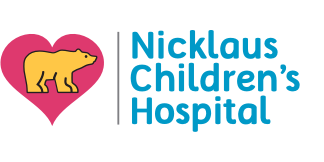- Parents Home
- Para Padres
- Allergy Center
- Asthma Center
- Cancer Center
- Diabetes Center
- Diseases & Conditions
- Doctors & Hospitals
- Emotions & Behavior
- First Aid & Safety
- Flu Center
- Food Allergy Center
- General Health
- Growth & Development
- Heart Health
- Homework Help Center
- Infections
- Newborn Center
- Nutrition & Fitness Center
- Play & Learn Center
- Pregnancy Center
- Q&A
- Recipes
- School & Family Life
- Sports Medicine Center
- Videos
- Kids Home
- Para Niños
- Asthma Center
- Cancer Center
- Diabetes Center
- Feelings
- Getting Help
- Health Problems
- Health Problems of Grown-Ups
- Heart Center
- Homework Center
- How the Body Works
- Illnesses & Injuries
- Kids' Medical Dictionary
- Movies & More
- Nutrition & Fitness Center
- Puberty & Growing Up
- Q&A
- Recipes & Cooking
- Relax & Unwind Center
- Stay Safe Center
- Staying Healthy
- Staying Safe
- Videos
- Teens Home
- Para Adolescentes
- Asthma Center
- Be Your Best Self Center
- Cancer Center
- Diabetes Center
- Diseases & Conditions
- Drugs & Alcohol
- Expert Answers (Q&A)
- Flu Center
- Homework Help Center
- Infections
- Managing Your Medical Care
- Managing Your Weight
- Nutrition & Fitness Center
- Recipes
- Safety & First Aid
- School & Work
- Sports Center
- Stress & Coping Center
- Videos
- Your Body
- Your Mind
A to Z: Ebstein's Anomaly
Ebstein's anomaly is a rare congenital (present at birth) defect in the right side of the heart. The cause is unknown.
More to Know
Someone with Ebstein's anomaly has a malformed (not formed correctly) and improperly positioned tricuspid valve. The tricuspid valve separates the two chambers on the right side of the heart. In a person with Ebstein's anomaly, the valve doesn't close properly, which causes blood to leak back from the lower chamber (ventricle) to the upper chamber (atrium). This disrupts blood flow and makes the heart work inefficiently, which can lead to enlargement of the right atrium, insufficient red blood supply to the body, or heart failure.
Ebstein's anomaly varies in severity from person to person. A newborn showing signs of the condition may be seriously ill and need surgery while someone whose symptoms don't appear until adulthood may not need any treatment.
Signs and symptoms of Ebstein's anomaly include shortness of breath, fatigue, rapid breathing, failure to grow, swelling in the legs, and a bluish skin color around the lips and nails. The condition is often associated with other heart defects, such as atrial septal defect (ASD), pulmonary (valve) stenosis, and abnormal heart rhythms (arrhythmias).
Keep in Mind
The long-term outlook for people with Ebstein's anomaly varies greatly, but with treatment and close monitoring by a cardiologist, most people with the disorder can go on to live healthy and productive lives.
All A to Z dictionary entries are regularly reviewed by KidsHealth medical experts.

© 1995- The Nemours Foundation. KidsHealth® is a registered trademark of The Nemours Foundation. All rights reserved.
Images sourced by The Nemours Foundation and Getty Images.

